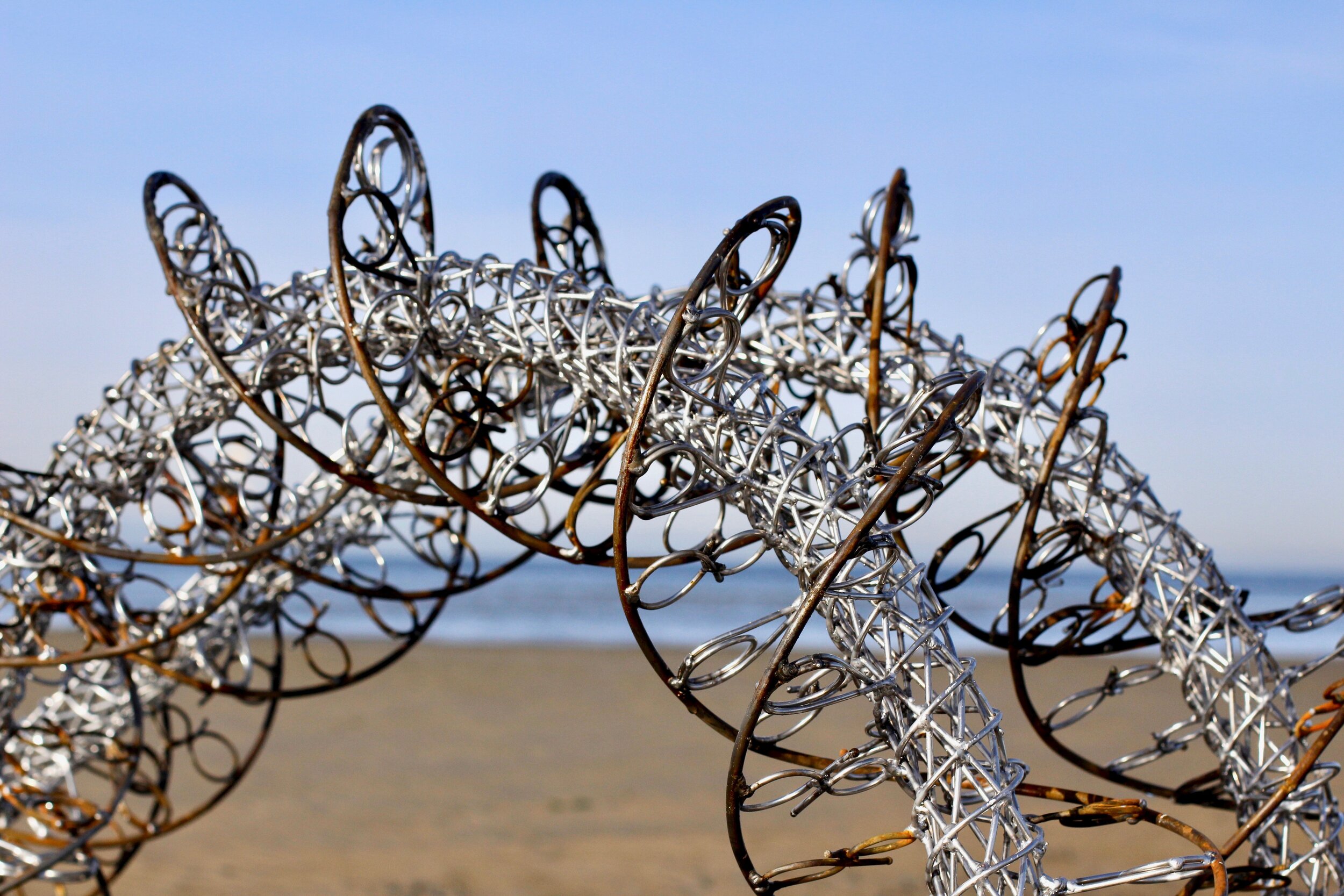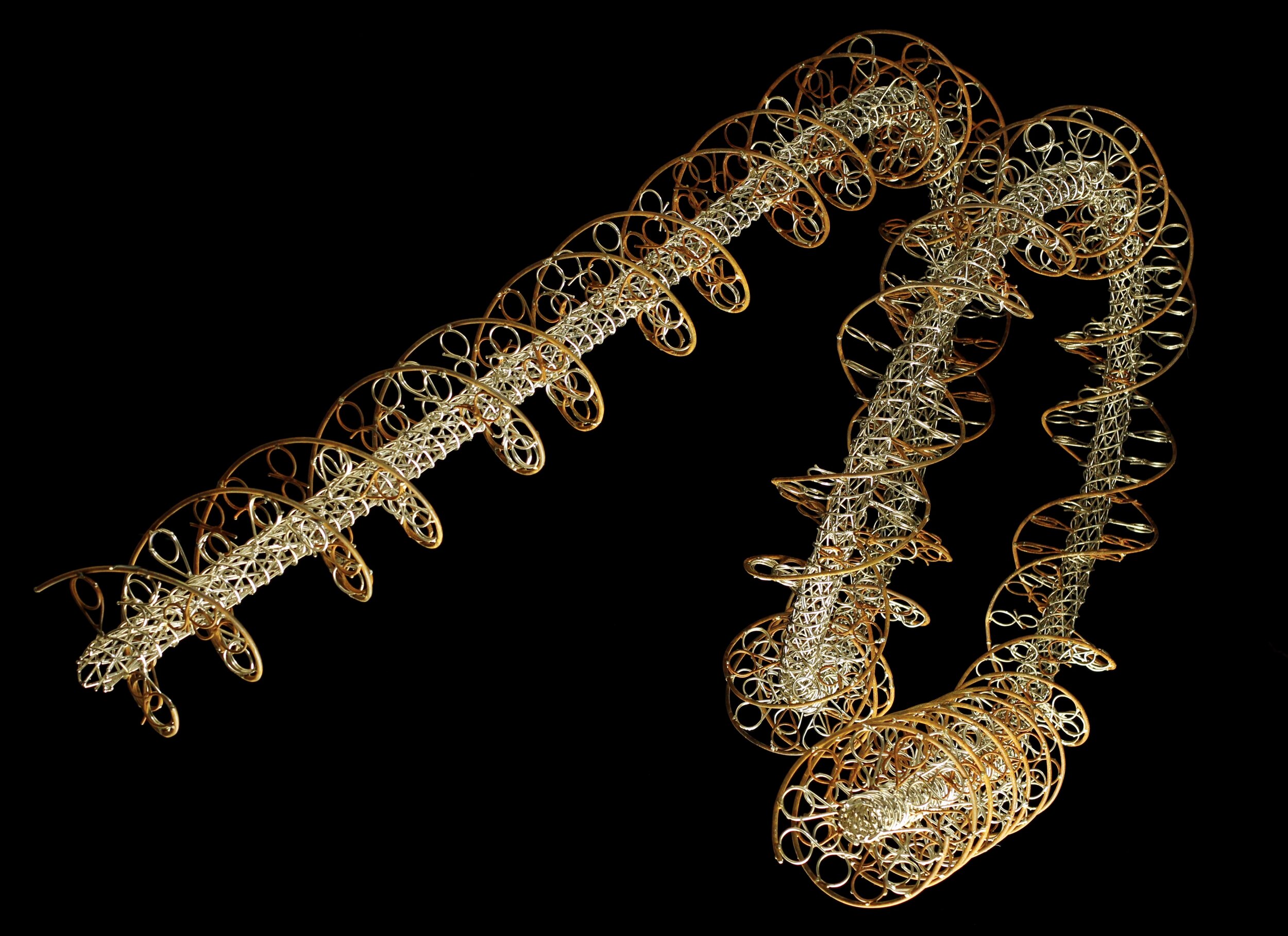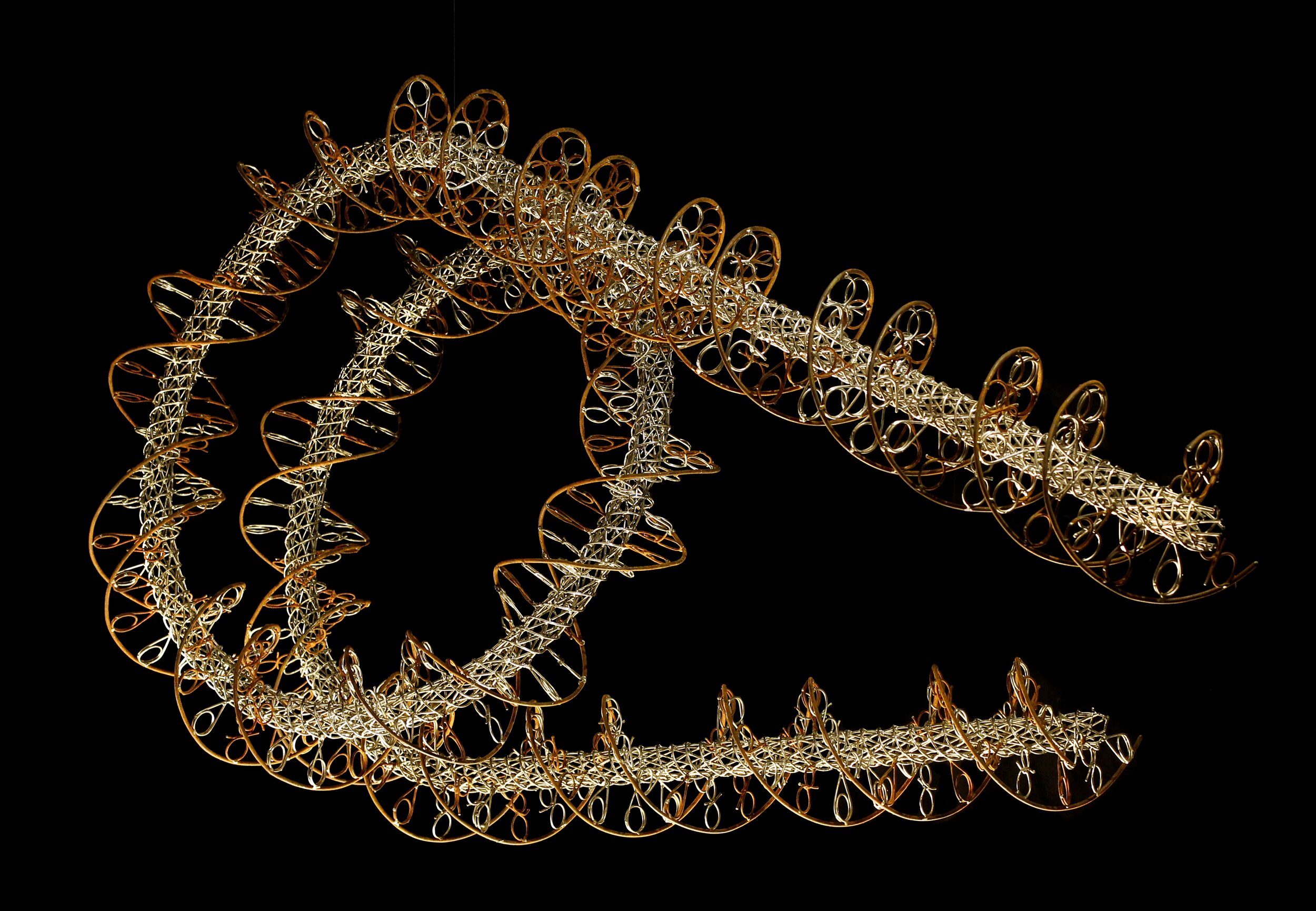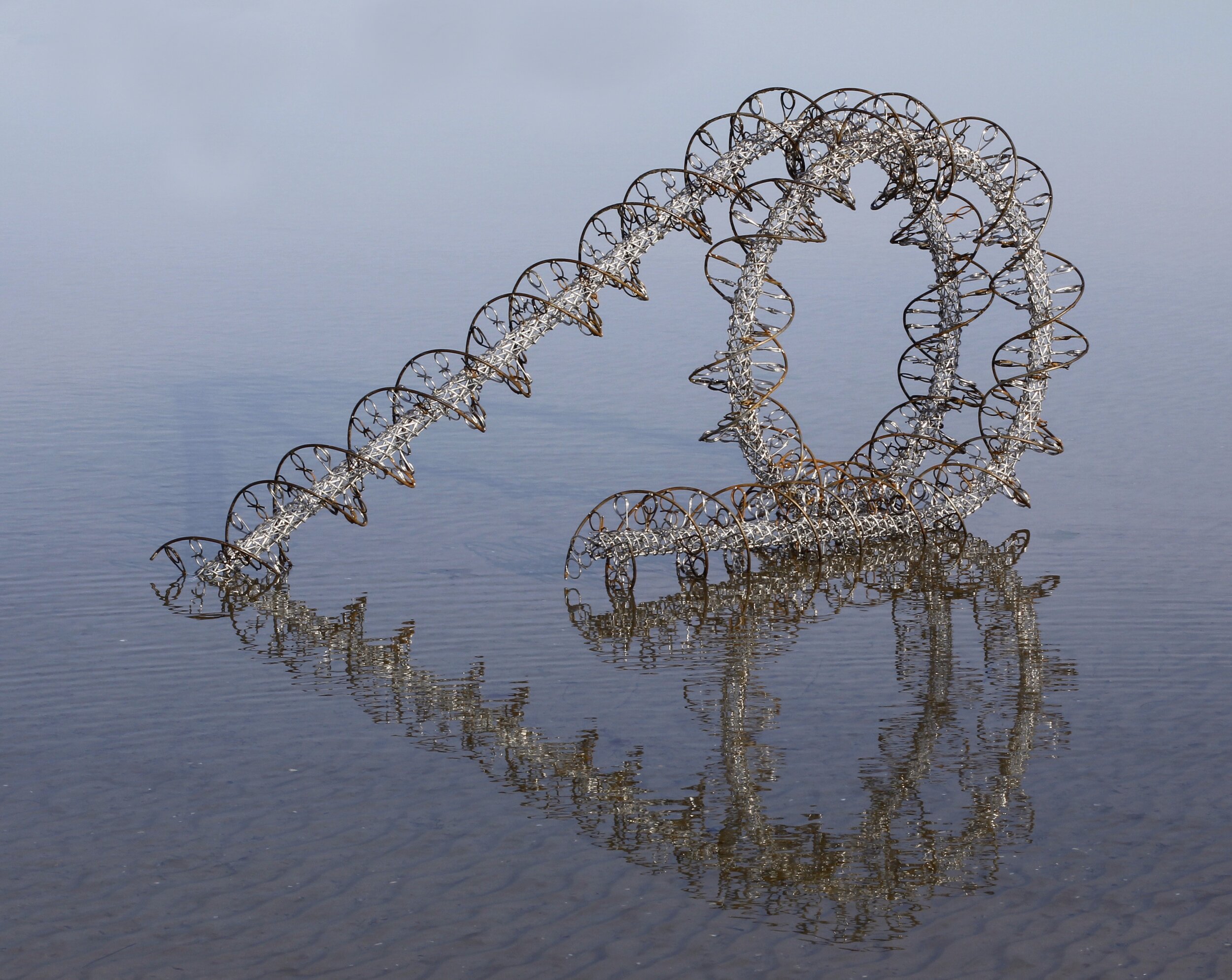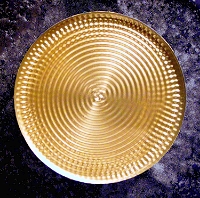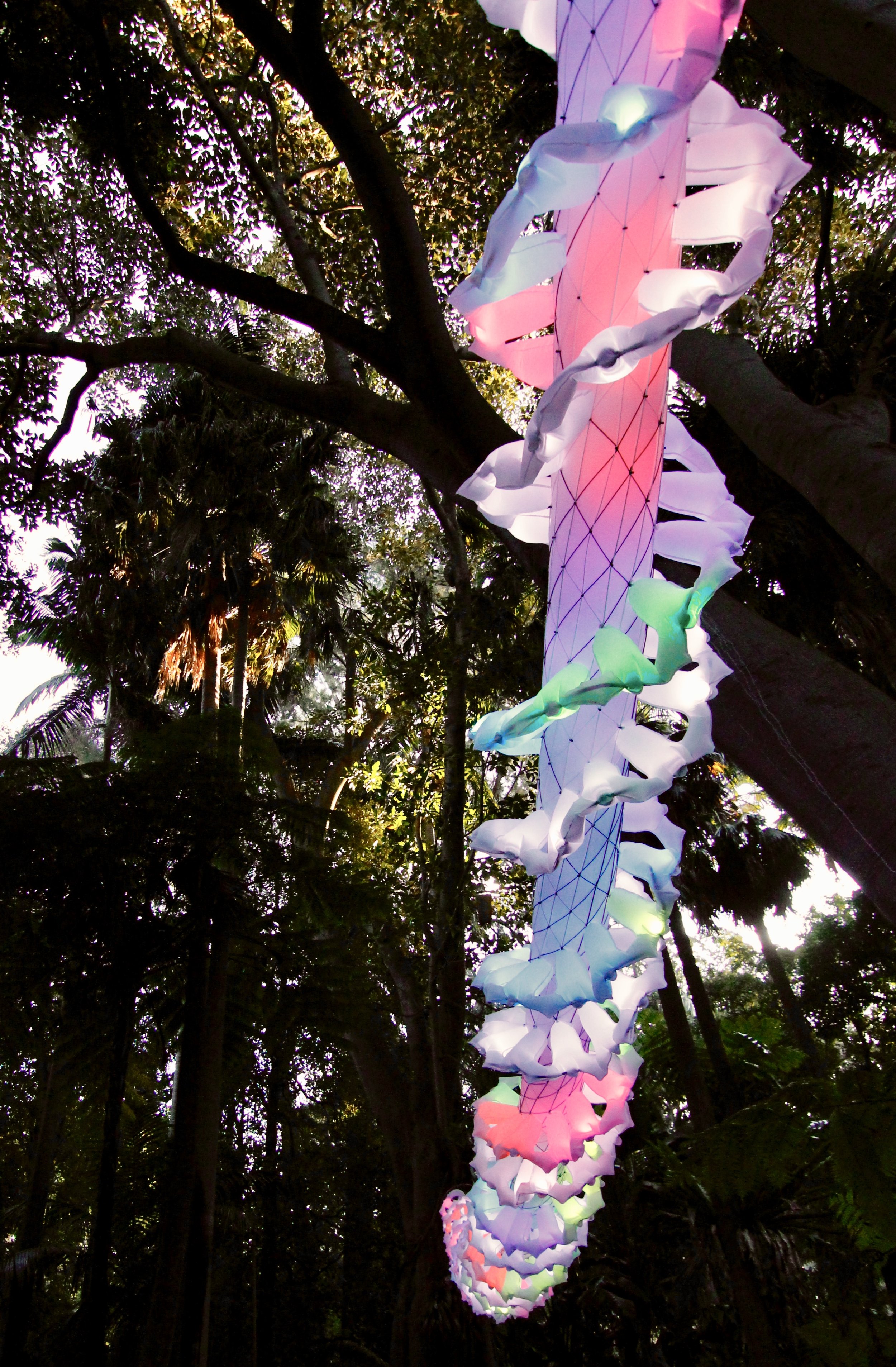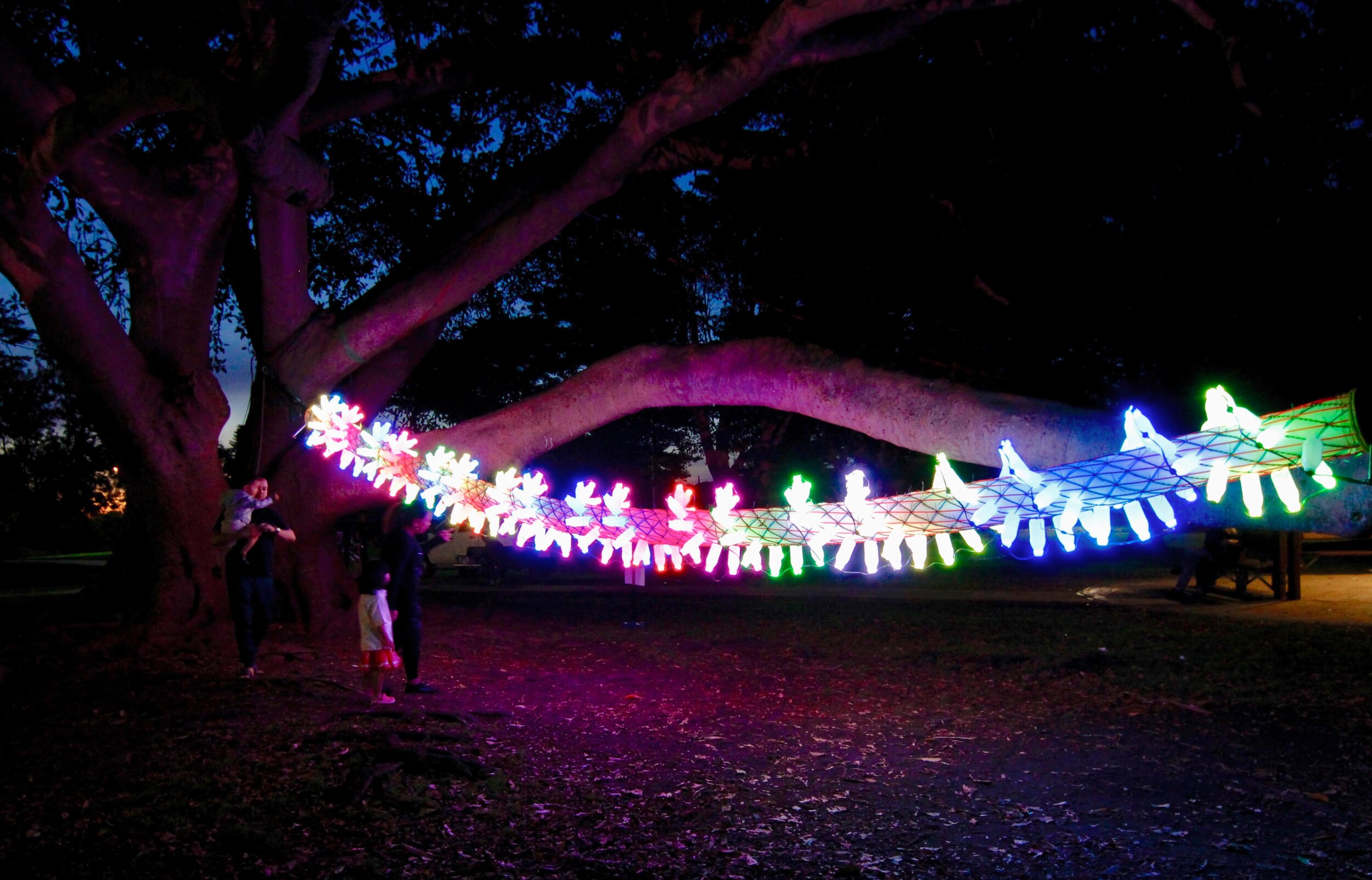The Genie (Fibonacci Sequenced) - 2022 - 13m x 1.2m x 0.6m - fabric, rope, LEDs, control system, blower
The Genie represent 13 full turns of DNA at a scale of one to 3 billion, making it 13m long, and 62cm in diameter. One hundred and thirty pairs of LEDs transform the genetic data of Rubisco, the most abundant enzyme on the planet, into scrolling colours and sound. Rubisco is the enzyme that all plants use to split carbon dioxide, fixing the carbon into their structure, and creating oxygen - it is the primary way that carbon enters the biosphere, without it, nothing breathes. The Genie is an accurate portrait of DNA, as defined by the Fibonacci numbers 3, 5, 8 and 13, and shows how the one molecule that is essential to all of life as we know it - DNA - relates to the Golden Ratio/ Phi and the Fibonacci numbers.
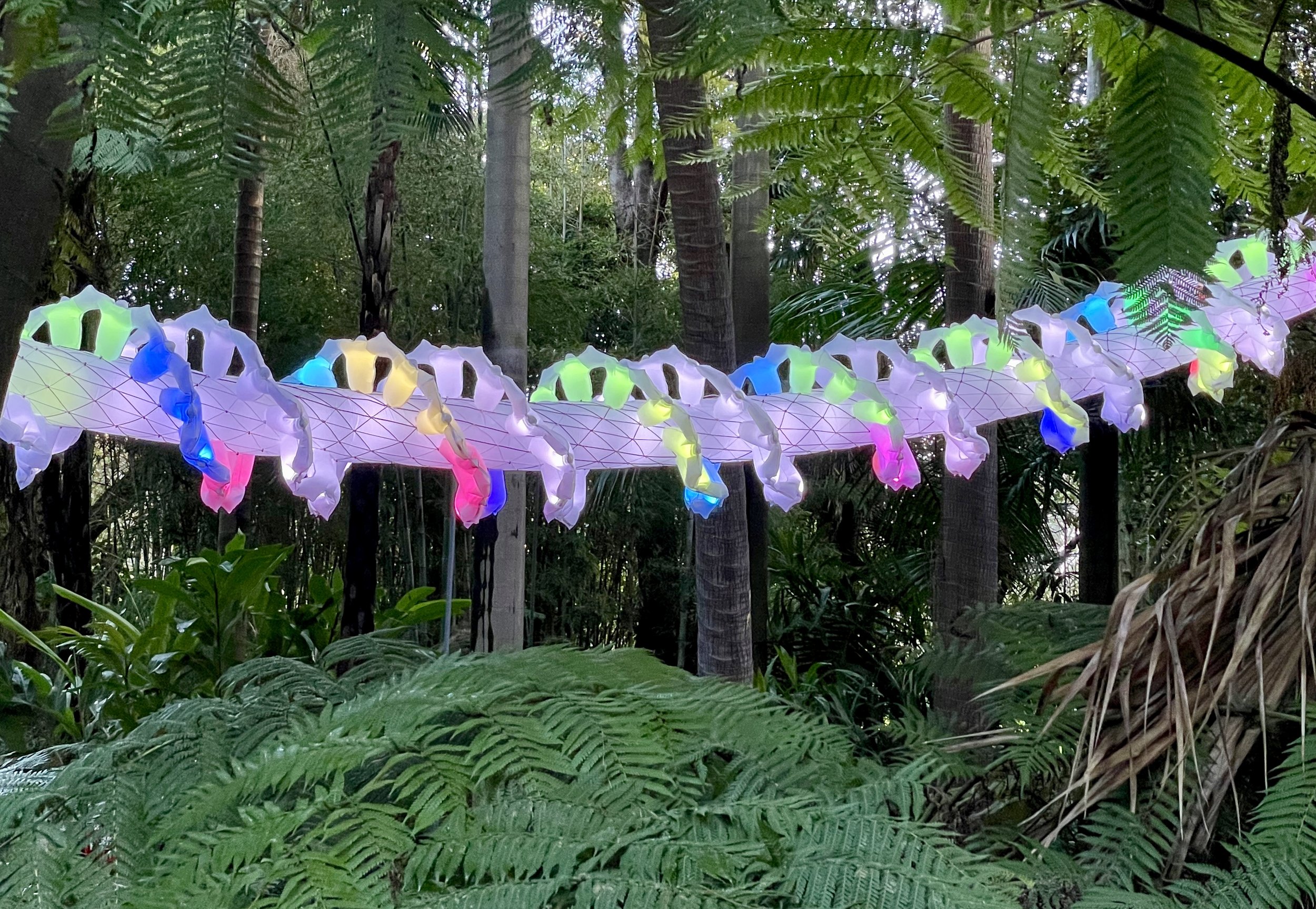
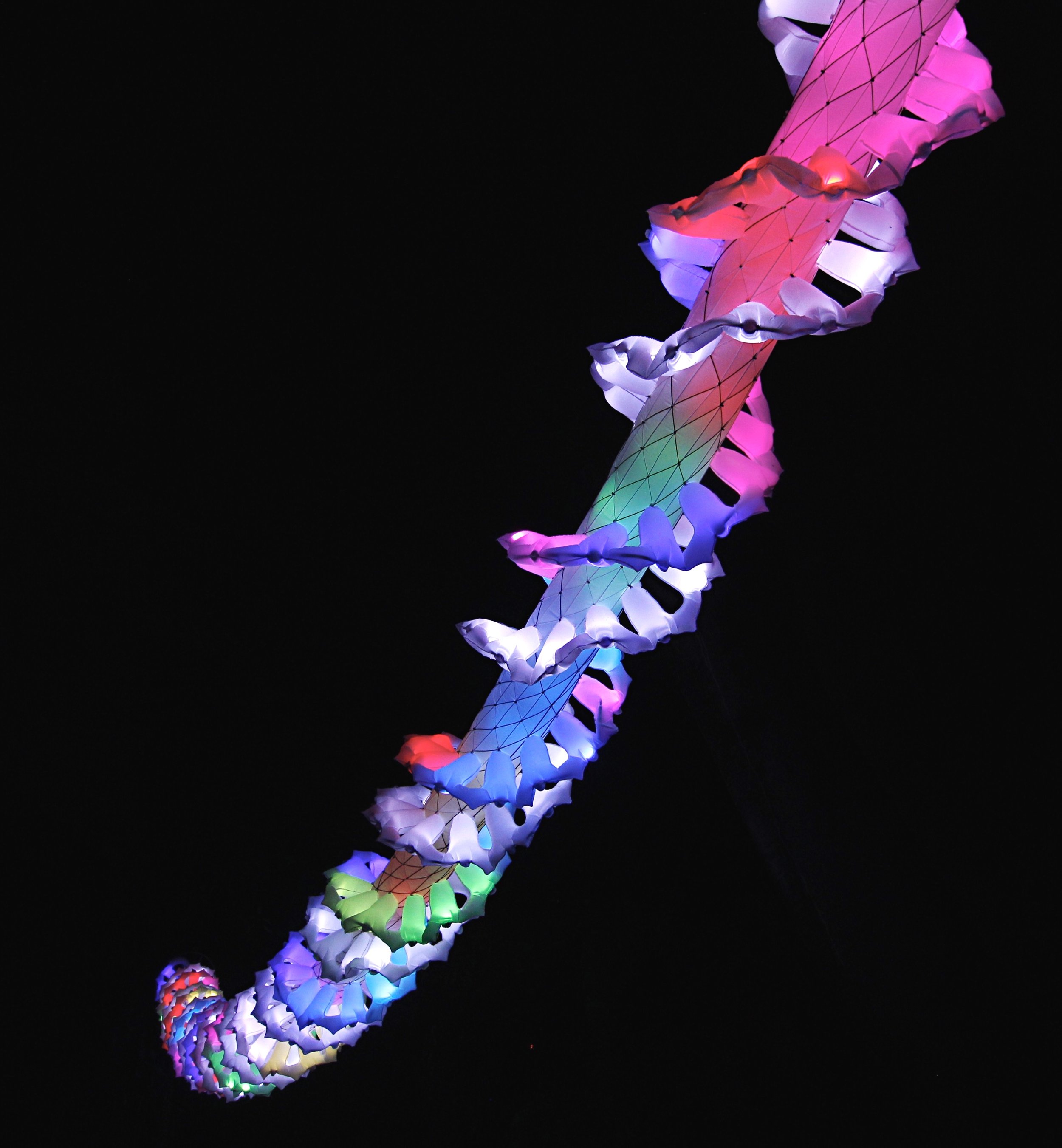
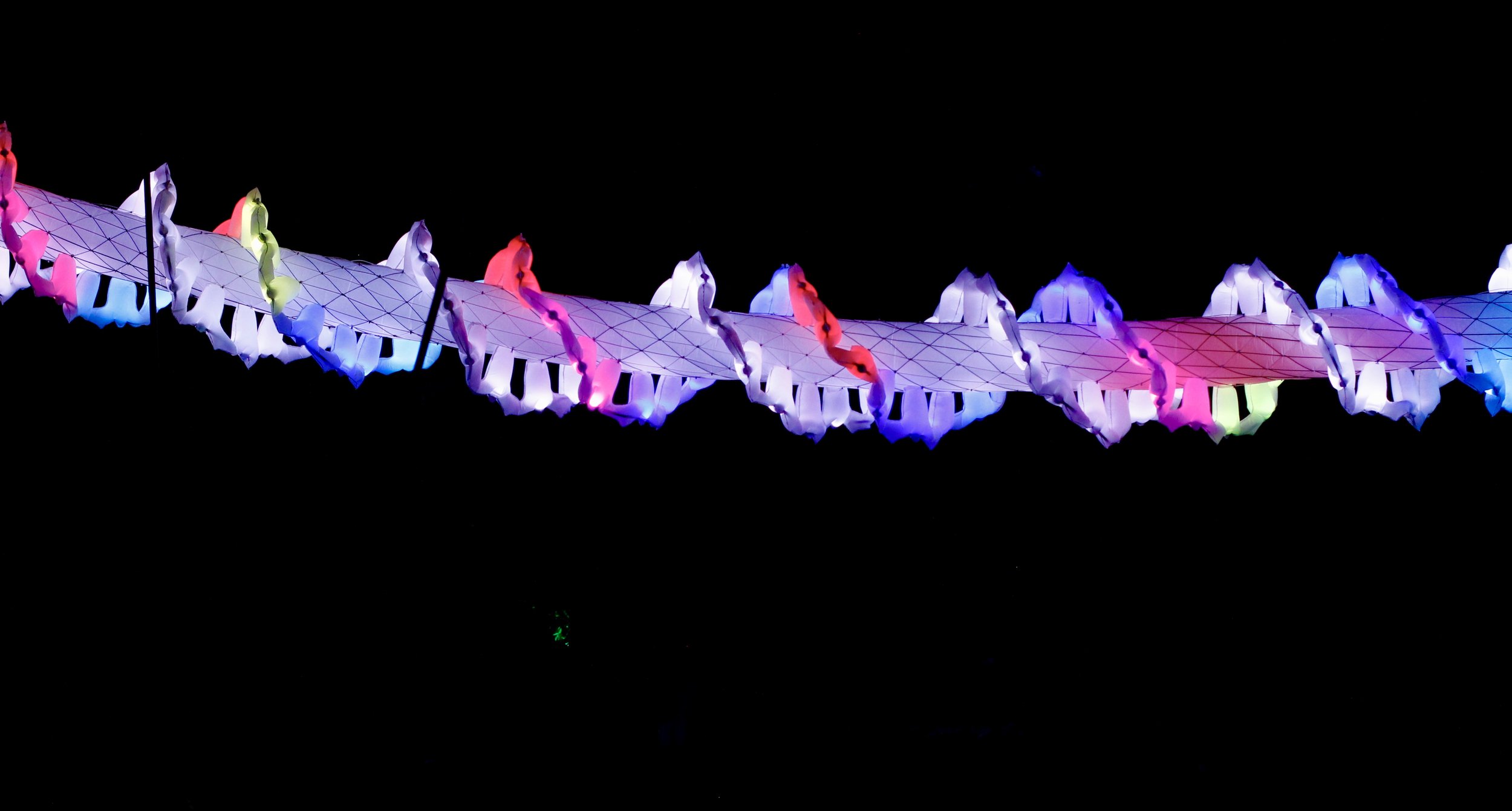
Sight of Sound - Rubisco x 4 - Video work (13 mins) - 2020
Sight of Sound - Rubisco x 4
Concept and Video - David Murphy
Sound Design / Composition - Stephen Grant
This new work is the interplay and interference patterns between pigmented water and the sonification of the genome of Rubisco. It is part of an ongoing series of cymatic artworks by David Murphy, this time in collaboration with Stephen Grant, who has used this genetic code - the most abundant section of DNA on the planet - as a compositional starting point for these four pieces of music.
Rubisco is the enzyme that all plants use to split carbon dioxide, “fixing”, or using the carbon in their structure, and releasing the oxygen as a bi-product - it is the molecular “engine room” of our atmosphere and climate.
Commissioned by The Substation as a part of their 2020 Development Program: Virtual Residency
Fibonacci’s Genie
Materials - sailcloth, double braid polyester, cable ties, HDPE bottles, LED lighting, blower, computer systems
Dimensions - 10m x 62cm x 62cm 2020
Fibonacci’s Genie is a geometrically accurate portrait of DNA - organised with the Fibonacci numbers - 3 billion times larger than life. It represents 10 turns of the molecule, which means there are 100 base pairs or “rungs” of the DNA ladder. By using pairs of programmable LED lanterns as the base pairs, genomic data from any life form can be represented on the sculpture as a lighting sequence of 20 colours of 3 lights, that correspond to the 20 amino acids that are translated by the codons of DNA. As these colours scroll down the length of Fibonacci’s Genie, they trigger a soundscape that plays in sync that is a sonification of that same genome - a genomic composition in colour and music
In the first public showings of this work, Fibonacci’s Genie is playing the genomic sequence of Rubisco. This is the section of DNA, or genetic code, that all plants use to capture carbon from CO2, releasing the oxygen. It is the primary way that carbon enters the biosphere, the most abundant section of DNA on the planet, and the best tool we have to combat the climate catastophe that we are currently facing.
The form of DNA is ordered by the Fibonacci numbers/Golden Ratio. Ratios such as the width of the molecule to a full turn of it, the ratio of DNA’s major groove to the minor groove, and the fact that there are exactly 10 steps or “rungs” of DNA per full turn (which gives it the cross-section of a decagon, whose side length to radius is the definition of the Golden Ratio).
The shape of DNA echos the spirals we see in nature at our scale, just billions of times smaller. It is so small, that it is thinner than a wavelength of visible light. It is literally “unseeable”.
Commissioned by Hobsons Bay City Council as a part of their 2020 Art Apart program
Rubisco 3.5.8
Materials - stainless steel, mild steel
Dimensions - 200cm x 80cm x 50cm 2020
This is a portrait of a nucleosome, the first of many folds that DNA does as it packs itself into the nucleus of each living cell. Made up of 3 distinct groups of 3mm stainless steel rod - 3 of them in the outer, 5 in the middle and 8 at the centre. The form of DNA can be “spelt out” with Fibonacci numbers, and it’s geometry references the Golden Ratio in too many ways to mention. This portrait is a scientifically accurate depiction of the geometry of DNA that exists in the unseeable nanoworld that is at the heart of all life as we know it.
Using two shapes made from two different metals to create the 4 bases that code all DNA, Rubisco 3.5.8 is coded with the first 200 “letters” of the Rubisco enzyme. This enzyme is the most abundant piece of DNA on the planet. It’s the enzyme that plants use to strip the carbon from carbon dioxide for their own use, releasing oxygen in the process. Rubisco is the invisible “Climate Change Super Hero”, and like all DNA, it is defined in space by the Golden Ratio ( the ratio of 1: ( √5 + 1 ) / 2 - or 1:1.681033988749895……. ).

